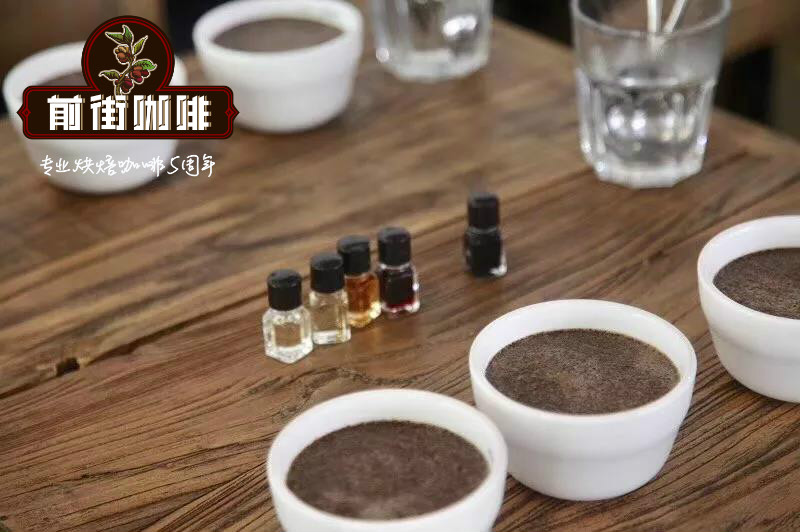What is a coffee cooperative? What does it have to do with us?

Professional coffee knowledge exchange More coffee bean information Please pay attention to coffee workshop (Weixin Official Accounts cafe_style)
Coffee is grown, processed and sold to cooperatives in many countries.
But what is a cooperative? How does it work? And how do farmers work together to produce single-origin coffee that can be traced back to its source?
To explore this question, the author interviewed José Marcos Rafael Magalh? es, a cooperative with 6000 members covering four of the six regions of Minas Gerais in Brazil, is the largest cooperative in the world. In fact, the coffee output here is even higher than that of Vietnam, which is one of the top countries in the world in terms of output. Such output is not trivial.
This article takes a look at how cooperatives operate and how they fit into the supply chain model of specialty coffee.
What is a coffee cooperative?
As its name suggests, coffee cooperatives are cooperative groups of coffee farmers who work together to gain access to better resources, such as better marketing resources, business opportunities, and personnel training resources.
All members of a cooperative pay a membership fee, which is then invested in the local community. The money collected is more effective than spending it alone. In addition, many large cooperatives have full-time employees who work in management, marketing, personnel education, and research.
"Cooperatives are non-profit organizations, everyone is willing to participate, and our job is to make it easier for members to access resources when producing or serving coffee," he said.
"The supply chain is not just fertilizer and pesticide spraying, but cash flow, information integration, technology application, etc. We must provide farmers with resources, knowledge, and allow farmers to sell coffee."
What does the cooperative give farmers?
Let's see how "providing production information" helps farmers. Andrea Nogueira Foresti has been a member of the cooperative for 35 years and is also the owner of the Fazenda do Lobo farm in Brazil, which is approximately medium-sized.
"The aim of this cooperative is to bring members 'products and services to the market on better terms than we would sell them ourselves, and they also provide services for us," he said. For example, the cooperative has a team consisting of a technical department, an agricultural department, and an agricultural preservation team. A bank offered us better credit rates so we could raise money to grow coffee. Here we have full support."
In fact, cooperatives may operate in a wide range of activities, including, but not limited to, the following:
Supply farmers pesticides and fertilizers
Technical support to farmers
Offer lower bank credit rates
Buying and selling farmers 'products
Connect farmers directly with buyers
Assistance in obtaining certification
Educational training support
Business advice and training
Different farms have different needs.
Cooperatives may find that different farmer members have different production models, and cooperatives must incorporate this component into their planning for farmers.
He said: "The cooperative wants to work closely with farmers and understand their expectations. Through research, we have taken them from small scale to medium and large scale. Everyone is important but has different needs, so we try to cater to each need."
"Large producers may need a $300,000 harvesting machine, while small producers may only need a $300 m. ozinha harvesters (hand-held instruments that shake loose and ripe fruit from branches of coffee trees). It is the responsibility of co-operatives to ensure that everyone's needs are met."
"But it's not just the size of the farm; producers may have different needs depending on the climate. Farmers will need a series of educational training on coffee harvesting and management, or education for farmers 'children. And these demands are very many and very different."
Why not work independently?
Of course, coffee producers do not have to join cooperatives, they can also operate independently, negotiate with traders and exporters independently, and certify independently. However, there are many processes involved, ranging from sales, intermediaries, and direct trade with buyers. So what details do farmers have to worry about?
First, not all producers have the capacity and resources to operate independently, and smaller farmers may not be able to produce enough to directly interface with exporters or roasters, forcing them to sell premium grade coffee to futures markets. You may also lack marketing and social resources, not to mention time spent negotiating business with potential customers or attending coffee shows abroad.
On the other hand, producers may wish to differentiate themselves from other farmers or to develop a direct trade partnership. It is particularly important to note that there are differences in the capacity of each cooperative to deal with this sector. In the case of the Minasul cooperative interviewed for this article, they connect producers with quality roasters so they can trade directly and present coffee with good technology. In this way, traceability of coffee can be preserved. Smaller cooperatives, however, where coffee produced by farmers may be processed and sold together, focus on group rather than individual needs.
Another thing to pay attention to is the marginal effect. As mentioned earlier, cooperatives are non-profit organizations, pay attention to individual farmers and attach importance to the development of producers. This means that if cooperatives want to operate well, they should return to the fact that farmers do well.
This is also why cooperatives often sell fertilizer to farmers, allowing them to reduce costs, and provide credit at low interest rates. Cooperatives can also buy and sell agricultural products in large quantities, but farmers will only be trapped in debt repayment rather than profit.
However, other organizations may have stakeholders such as shareholders to share profits. Since independent farmers tend to be smaller than cooperatives, the costs of cultivation for these farmers are higher. Because the cost burden is not only material expenditure (gross margin), but also includes management expenses.
Not all cooperatives treat their members that well, of course, but generally coffee cooperatives are what they are called: producers working together to improve coffee quality and strengthen their position in the supply chain.
Coffee farming is an extremely challenging industry, and with global warming and fluctuations in coffee prices, it's never easy. Cooperatives are committed to providing member assistance, overcoming difficulties, building infrastructure, education and financial planning, establishing direct trade lines with exporters and bean bakers, etc.
Important Notice :
前街咖啡 FrontStreet Coffee has moved to new addredd:
FrontStreet Coffee Address: 315,Donghua East Road,GuangZhou
Tel:020 38364473
- Prev

What is Panamanian Rose Summer? Why is the Panamanian summer so popular? Flavor characteristics of Rosa Rosa
For more information on coffee beans, please follow the coffee workshop (Wechat official account cafe_style). The species of Geisha was discovered in the rose forest of Ethiopia in 1931 and sent to the Coffee Institute in Kenya. It was introduced to Uganda and Tanzania in 1936, Costa Rica in 1953 and Panama from Dongba in the 1970s.
- Next

Front street opening ceremony! Seasonal hanging ear 19.9+ combination hanging ear 29.9+ candle flower butterfly discount
Professional coffee knowledge exchange More coffee bean information Please pay attention to coffee workshop (Weixin Official Accounts cafe_style) Happy New Year! Big fan discount! Front Street New Year Lilly ~ Hanging ears Front Street Selected single production area Hanging ears box of ten packs of a single variety 19.9 POS EXPRESS!! Copyright © 2016 - 2017 All Rights Reserved.
Related
- Why are the coffee in some coffee shops not enough after being frozen? What should I make up for my American latte cappuccino coffee after being frozen?
- How much water does it take to steam coffee by hand? Why is the coffee brewing and steaming time 30 seconds? What is the purpose of steaming coffee?
- The suspected drink contains too much caffeine! Overlord Tea Lady responds urgently!
- Starbucks rejects antique paper coupons?! Netizen: Missed marketing opportunities!
- What ratio of water temperature and ground does the smart cup method use to press coffee? The difference between brewed coffee and filtered coffee?
- What is the standard process for the purpose of coffee cup testing? What is the difference between hand-brewed coffee and cup testing?
- How to use hand-brewed coffee paragon small golden balls? How does cold coffee lock in the aroma of coffee?
- Is American coffee black? What is the difference between American coffee and drip coffee?
- Unexpected! Well-known tea beverage brand Lele Tea will withdraw from the Zhengzhou market!
- Starbucks enters the fashion and beauty industry?! Netizen: Give me an ice American eye cream

